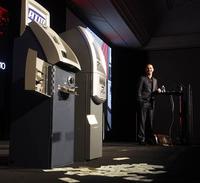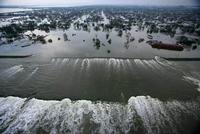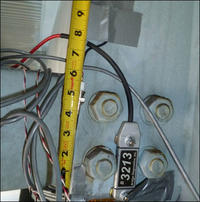-
Senate panel signs off on cybersecurity bill
The Senate Commerce Committee has approved a cybersecurity bill aiming to bolster protection of U.S. critical infrastructure. The full Senate will vote on the bill by the end of the year. The bill codifies parts of of President Obama’s February 2013 cybersecurity executive order. Among other things, the executive order instructs the National Institute of Standard and Technology (NIST) to draft a set of cybersecurity practices and standards.
-
-
Quake Summit 2013: showcasing research on earthquakes, tsunamis
Members of a national earthquake simulation research network next week will gather at the University of Nevada, Reno (UNR), for Quake Summit 2013, a scientific meeting highlighting research on mitigating the impact of devastating earthquakes and tsunamis. Titled “Earthquake & Multi-Hazards Resilience: Progress and Challenges,” the annual summit of the 14-site George E. Brown Network for Earthquake Engineering Simulation (NEES), will run from 6 August through 8 August at UNR’s Joseph Crowley Student Center.
-
-
Online tools accelerate progress in earthquake engineering, science
A new study has found that on-line tools, access to experimental data, and other services provided through “cyberinfrastructure” are helping to accelerate progress in earthquake engineering and science. The cyberinfrastructure includes a centrally maintained, Web-based science gateway called NEEShub, which houses experimental results and makes them available for reuse by researchers, practitioners, and educational communities. NEEShub contains more than 1.6 million project files stored in more than 398,000 project directories and has been shown to have at least 65,000 users over the past year.
-
-
Simulations help in studying earthquake dampers for structures
Researchers have demonstrated the reliability and efficiency of “real-time hybrid simulation” for testing a type of powerful damping system that might be installed in buildings and bridges to reduce structural damage and injuries during earthquakes. The magnetorheological-fluid dampers are shock-absorbing devices containing a liquid that becomes far more viscous when a magnetic field is applied.
-
-
Cost of Arctic methane release could be “size of global economy”: experts
As the Arctic warms and sea ice melts at an unprecedented rate, hitting a record low last summer, the thawing of offshore “permafrost” in the region is releasing methane, a powerful greenhouse gas. Economic modeling shows that the possible methane emissions caused by shrinking sea ice from just one area of the Arctic, the East Siberian Sea, could come with a global price tag of $60 trillion — the size of the world economy in 2012.
-
-
U.K. winter flooding to get more severe, frequent

Winter flooding in the United Kingdom is set to get more severe and more frequent under the influence of climate change as a result of a change in the characteristics of atmospheric rivers (ARs). ARs are narrow regions of intense moisture flows in the lower troposphere of the atmosphere that deliver sustained and heavy rainfall to mid-latitude regions such as the United Kingdom.
-
-
Black Hat event highlights vulnerability of U.S. critical infrastructure

Cybersecurity researchers at the Black Hat conference now going on in Las Vegas, will demonstrate how hackers can gain access to U.S. critical infrastructure, and even cause explosions in oil and gas facilities, by altering the readings on wireless sensors used by the oil and gas industry. The faulty sensors typically cost between $1,000 and $2,000 each, and hundreds or even thousands of them are used at a single oil, gas, or water facility.
-
-
NIST seeking comments on energy industry security scenarios
The National Cybersecurity Center of Excellence (NCCoE) works with industry, academic, and government experts to create open, standards-based, modular, end-to-end solutions to cybersecurity challenges that are broadly applicable across a sector. The solutions are customizable to the needs of individual businesses, and help them more easily comply with relevant standards and regulations. The work is organized around use cases that describe sector-specific challenges.
-
-
Feds give upstate New York counties $5 million money to repair roads, bridges
The Federal Highway Administration (FHA) has approved $5 million in emergency funding to help fifteen upstate New York counties make repairs to their roads and bridges damaged in a flood late last month.
-
-
Warming to reduce snow water storage 56 percent in Oregon watershed

A new report projects that by the middle of this century there will be an average 56 percent drop in the amount of water stored in peak snowpack in the McKenzie River watershed of the Oregon Cascade Range — and that similar impacts may be found on low-elevation maritime snow packs around the world. The snowpack reduction may have significant impacts on ecosystems, agriculture, hydropower, industry, municipalities, and recreation, especially in summer when water demands peak.
-
-
Changes to levee system would reduce storm surge risks to New Orleans: study

Historically, the design of Southeast Louisiana’s hurricane flood risk reduction system has hinged on raising and adding levees in response to river or hurricane events that impact the region. A new study shows that the lowering of man-made levees along 55-kilometer section of the west bank of the Lower Plaquemines river to their natural state, to allow storm surge to partially pass across the Mississippi River, will decrease storm surge upriver toward New Orleans.
-
-
Lawmakers, citing shortcomings, threaten funding for chemical plant safety program

Heads of three congressional panels urge DHS secretary Janet Napolitano to take to correct shortcomings in the Chemical Facilities Anti-Terrorism Standards (CFATS) program. “As the authorizers and appropriators of this program, we write to you to express serious reservations about continuing to extend CFATS funding without evidence of substantial programmatic improvement,” the three chairmen write in their letter to Napolitano. The lawmakers pointed to flaws in the program’s risk evaluation system, compliance hurdles, implementation delays, and the failure of the program to identify vulnerable facilities.
-
-
Motivating businesses to adopt building resiliency standards
Increased resilience for buildings in the face of hurricanes, earthquakes, terrorism, or cyberattacks has been a major national security focus over the past decade. Such resilient buildings not only would be less susceptible to damage and work interruption but could become community gathering places in a general crisis. It will not be easy, however, to secure voluntary adoption of resiliency standards by industry and builders without adequate justification.
-
-
Cost to U.S. of cybercrime lower than earlier estimates
The Center for Strategic and International Studies (CSIS) and security firm McAfee published a revision of McAfee’s previous estimate of the cost of cybercrime to the United States, reducing the amount from $1 trillion to $100 billion. Experts say this should not be a reason for complacency.
-
-
UMaine student develops affordable option for shoring up Maine’s aging bridges

The State of Maine Department of Transportation is responsible for 2,772, or 70 percent, of the bridges in the state. A 2007 report found that of those bridges, 205 are more than 80 years old, 244 were considered in poor condition, and 213 were found to be structurally deficient. Additionally, 288 bridges were at risk of closure or weight restrictions between 2007 and 2017. Replacing all these bridges would be too costly. Researchers developed software designed specifically to assess the load rating of flat-slab bridges to determine which bridges can be repaired instead of replaced. For the bridges that can last a few more years with reinforcing instead of replacing, the researchers engineered a retrofitting system which could be applied to increase the bridge’s strength and weight limits.
-
More headlines
The long view
Helping Strengthen America’s Critical Infrastructure
Everyday life depends on a robust infrastructure network that provides access to running water, communications technology and electricity, among other basic necessities. The experts who keep our national infrastructure secure and resilient also need a strong network to share their knowledge and train the next generation of professionals capable of solving complex infrastructure challenges.
AI and the Future of the U.S. Electric Grid
Despite its age, the U.S. electric grid remains one of the great workhorses of modern life. Whether it can maintain that performance over the next few years may determine how well the U.S. competes in an AI-driven world.
